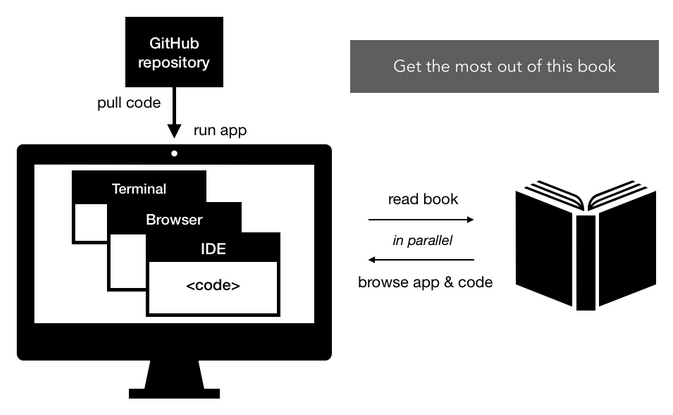The content in this book is practical-oriented and covers the implementation steps, code, and concepts relevant to building each MERN application. However, most of the code explanations will refer to specific snippets from files that may contain more lines of code, making up the complete and working application code.
Put simply, it is highly recommended that, rather than attempting to just read through the chapters, you should run the relevant code in parallel, and browse through the application features while following the explanations in the book.
Chapters that discuss code implementations will point to the GitHub repositories containing the complete code with instructions on how to run the code. You can pull the code, install it, and then run it before reading through the chapter:

You should consider the recommended steps outlined here to follow the implementations in this book:
- Before diving into the implementation details discussed in the chapter, pull the code from the relevant GitHub repository.
- Follow the instructions with the code to install and run the application.
- Browse the features of the running application while reading the feature descriptions in the relevant chapter.
- With the code running in development mode and also open in the editor, refer to the steps and explanations in the book to get a deeper understanding of the implementations.
This book aims to provide a quick onboarding with the working code for each application. You can experiment with, improve, and extend this code as desired. For an active learning experience, you are encouraged to refactor and modify the code while following the book. In some examples, the book chooses verbose code over succinct and cleaner code because it is easier to reason about for newcomers. In some other implementations, the book sticks with more widely used and traditional conventions over modern and upcoming JavaScript conventions. This is done to minimize disparity when you refer to online resources and documentation while researching the discussed technologies and concepts on your own. These instances, where the code in the book can be updated, serve as good opportunities to explore and grow skills beyond what is covered in the book.
You should now have an overall idea of what to expect in this book and how you can utilize its content and structure to the fullest as we move on to discussing the specifics of the MERN stack and start uncovering its potential.



